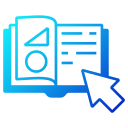Culture and Pragmatics Woven into the Curriculum
Curriculums should teach when to use formal or informal address, how to soften requests, and how to write culturally appropriate emails. Role-plays, email clinics, and corpus examples help. Ask whether pragmatic outcomes appear in syllabi and assessments, not just in optional activities or side comments.
Culture and Pragmatics Woven into the Curriculum
Look for modules on news literacy, holidays, workplace etiquette, humor, and identity. These should integrate language aims such as summarizing, comparing perspectives, or presenting findings. Suggest topics relevant to your field, and tell us which cultural lens you wish your curriculum explored more deeply.









